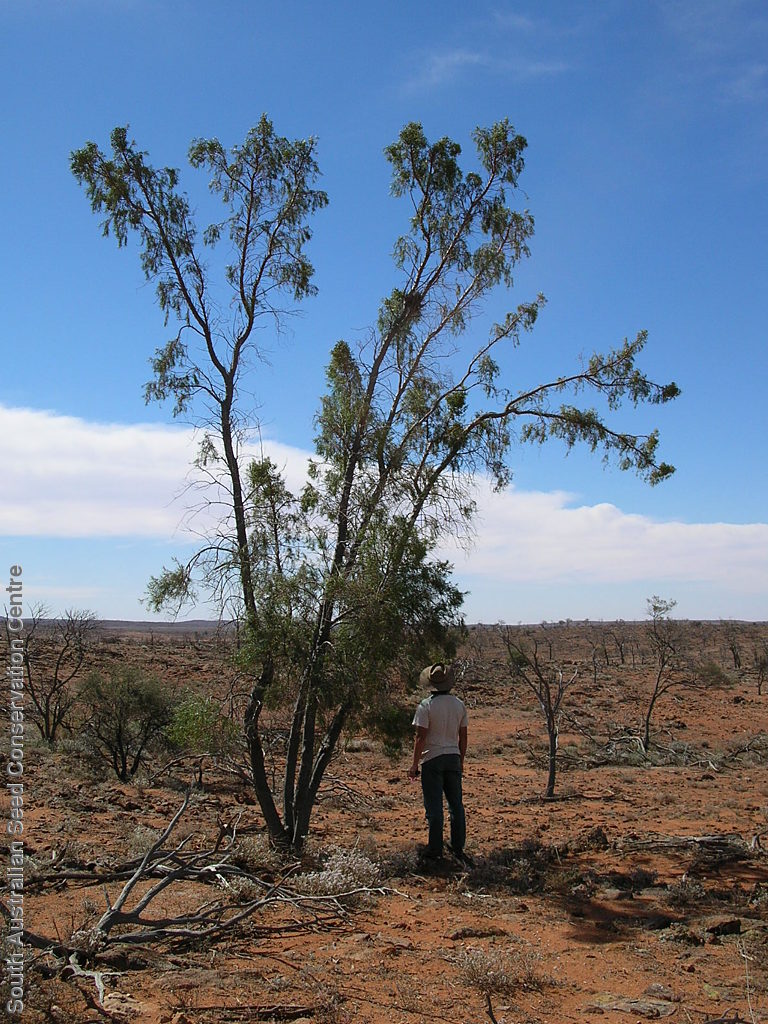


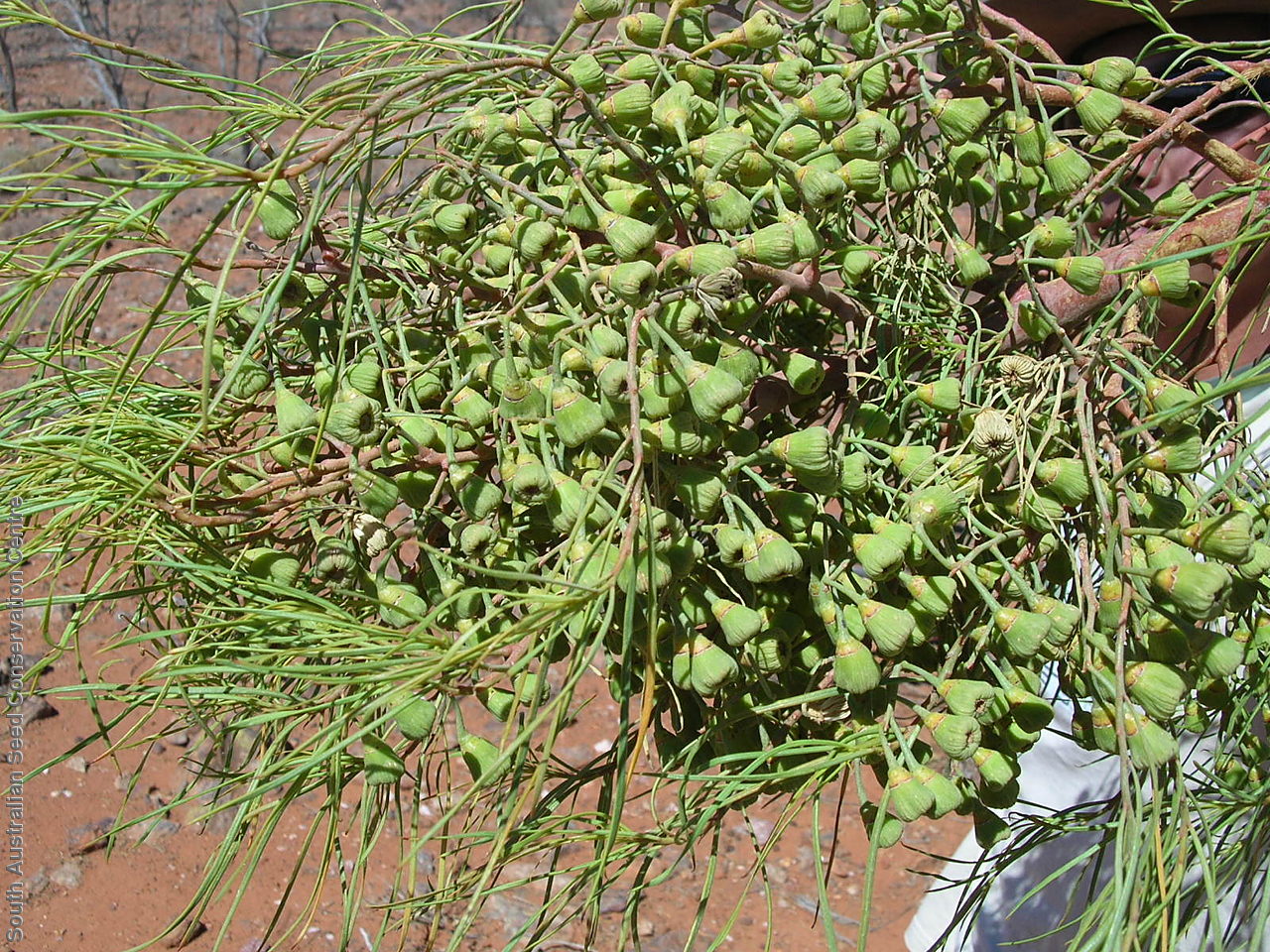
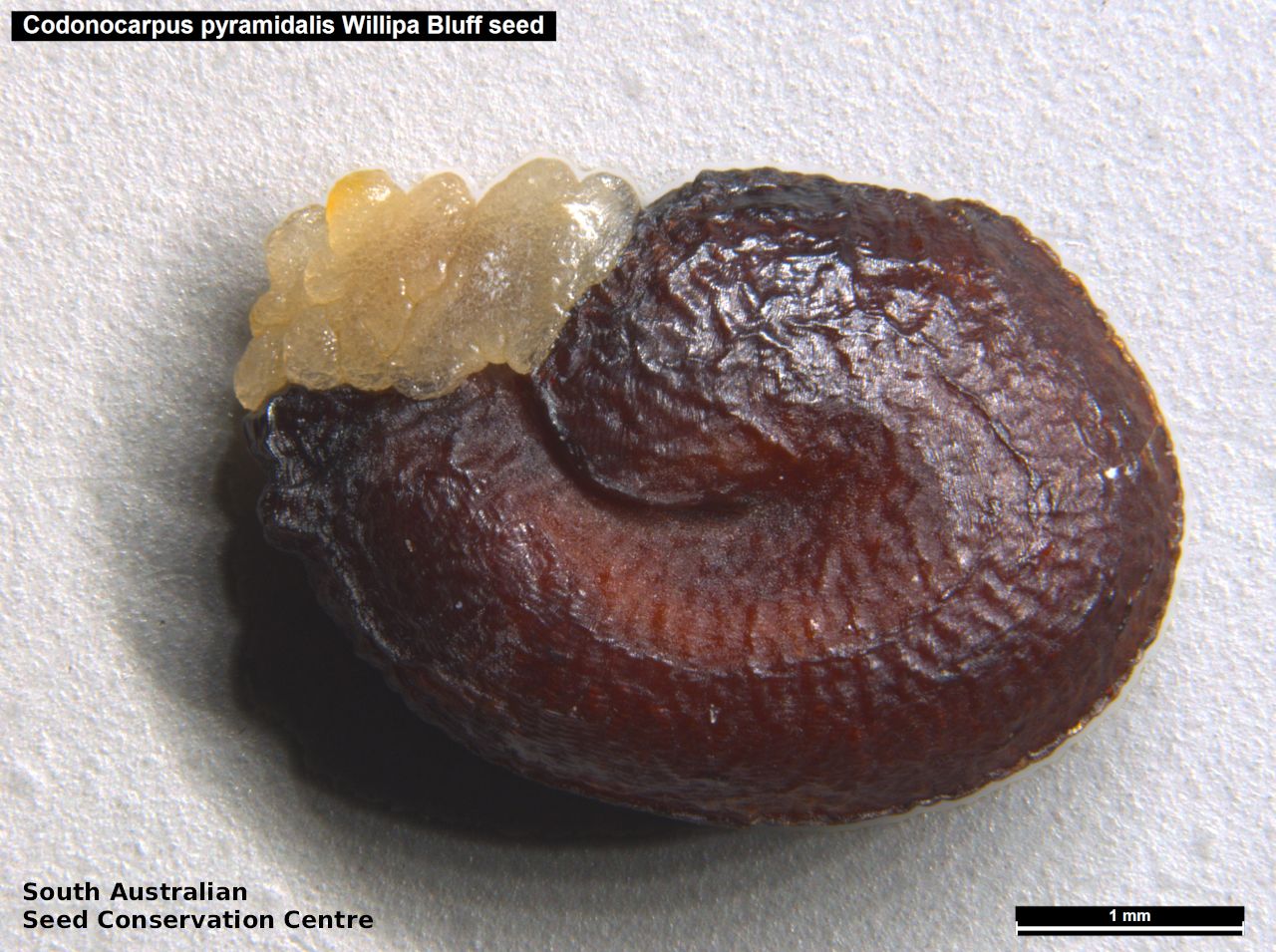
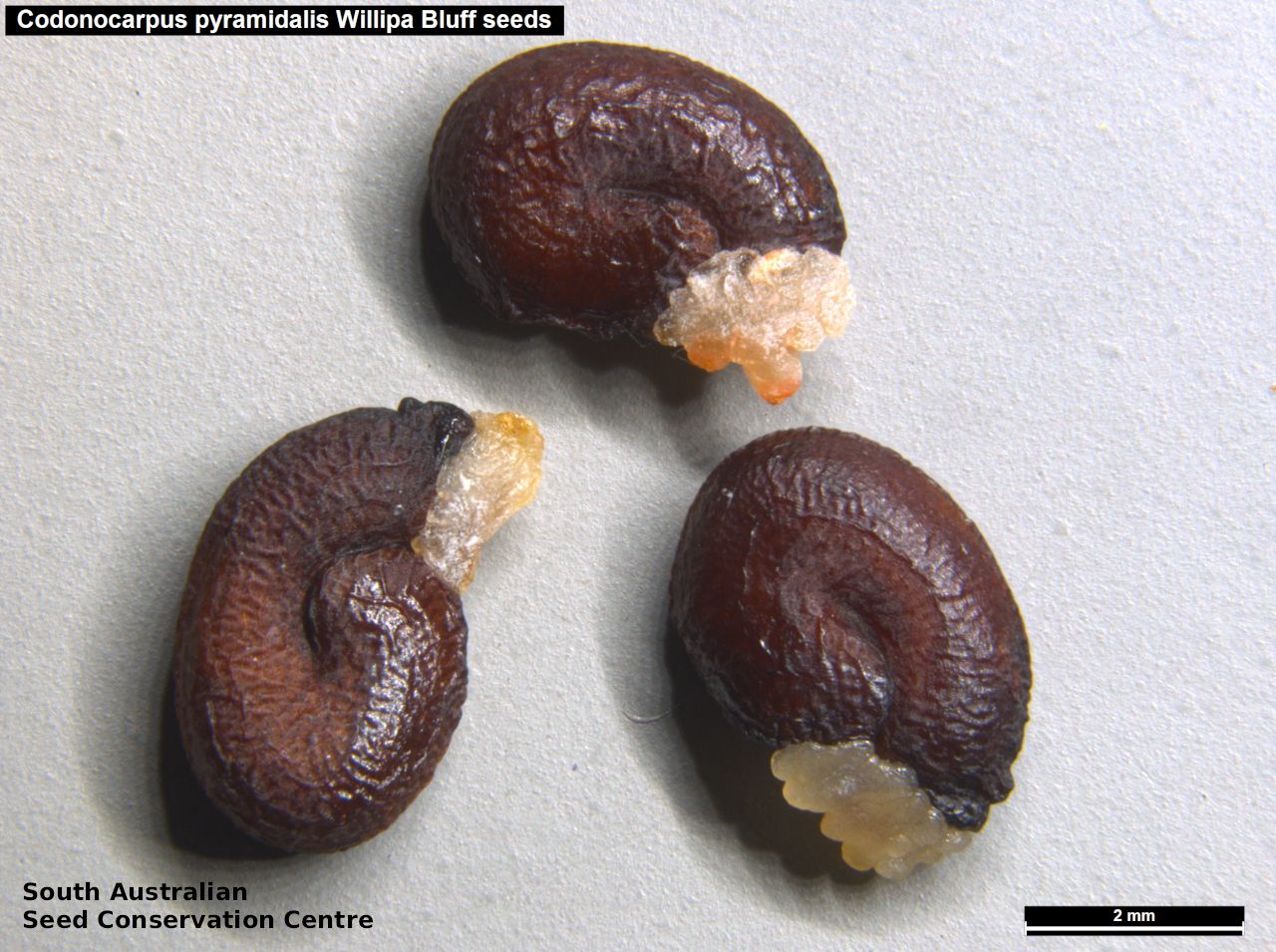

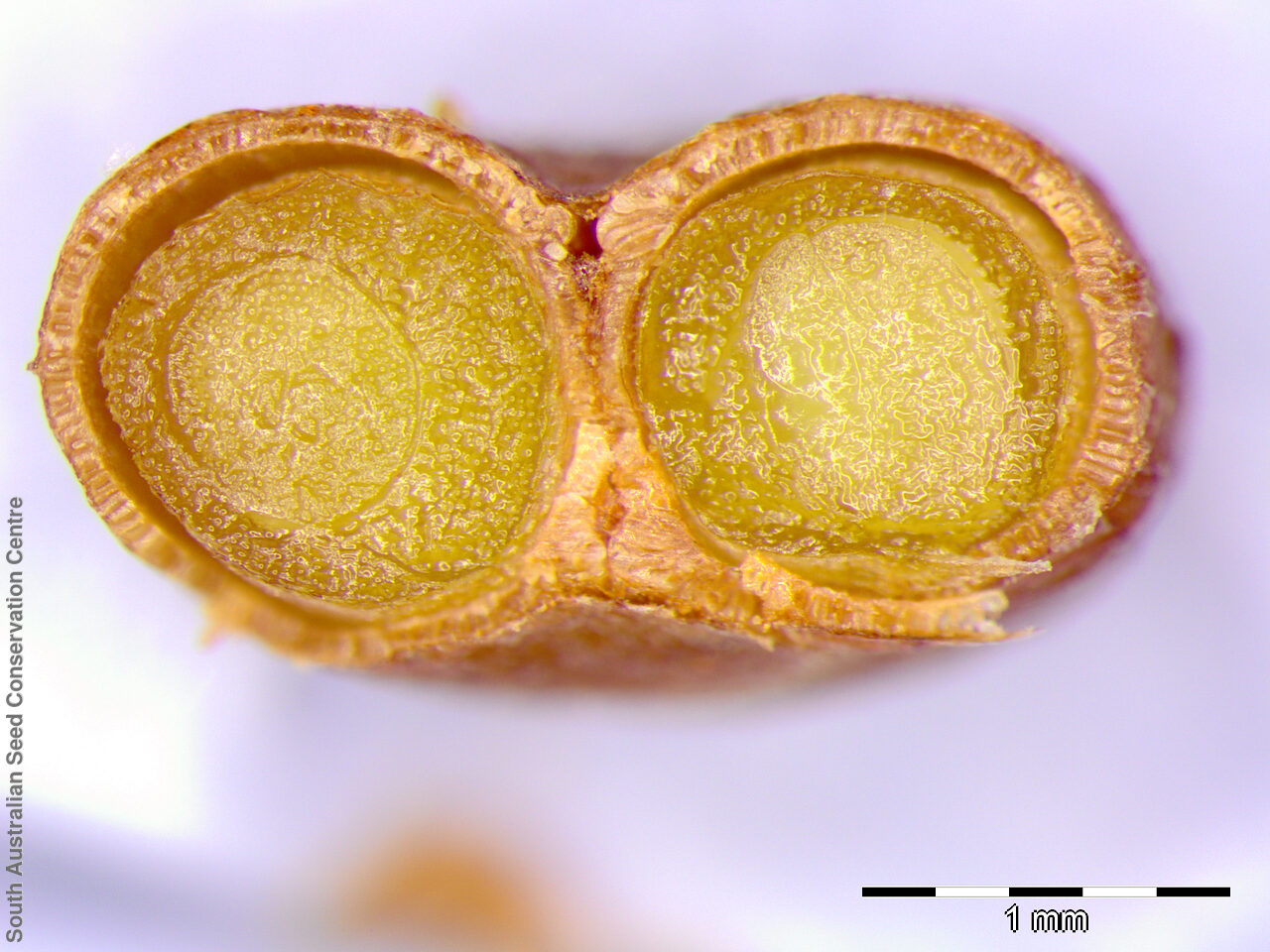


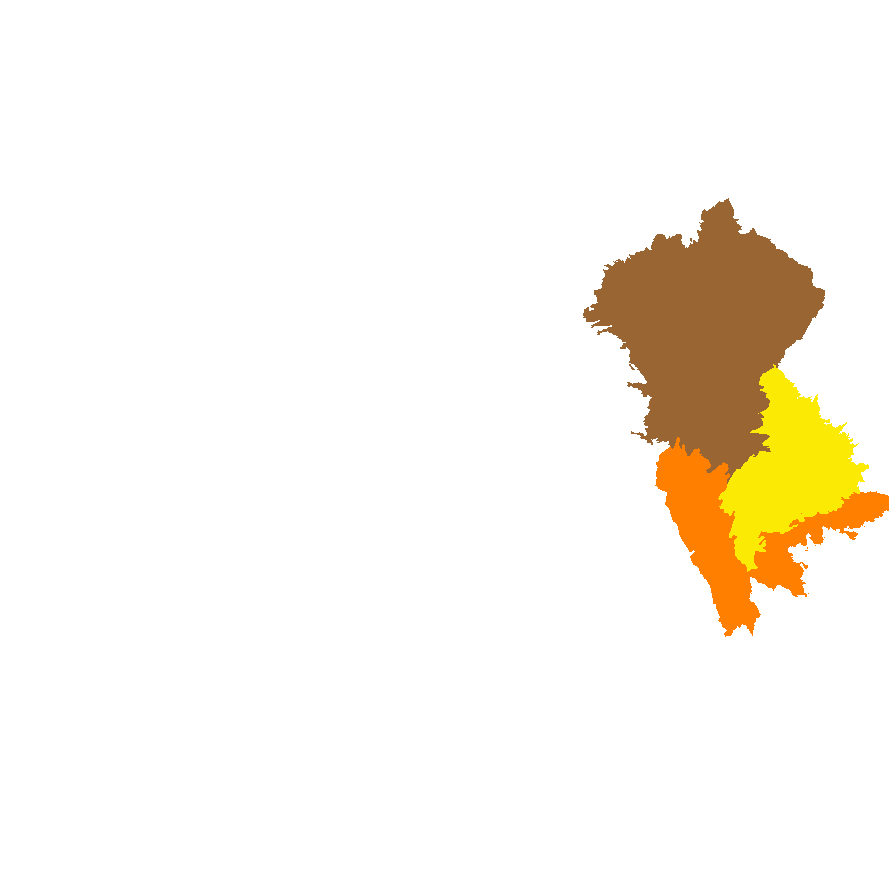
Botanical art
Prior names
Gyrostemon pyramidalis
Common names
Slender bell-fruit
Camel Poison
Etymology
Codonocarpus from the Greek 'kodon' meaning a crier's bell and 'karpos' meaning a fruit; alluding to the shape of the fruit. Pyramidalis from the Greek 'pyramis' meaning pyramid; alluding to the shape of the plant.
Distribution and status
Found scattered across the east central part of South Australia in the Flinders and Olary Ranges, growing on sandy soil. Has been recorded in New South Wales but is now presumed extinct. Native. Very rare in South Australia. Presumed extinct in New South Wales. More common post fire.
Herbarium regions: Lake Eyre, Flinders Ranges, Eastern, Northern Lofty, Murray
NRM regions: Northern and Yorke, South Australian Arid Lands, South Australian Murray-Darling Basin
AVH map: SA distribution map (external link)
Plant description
Small weak tree up to 8 m tall usually with multi-stems. Tree looks similar to a pine tree from a distance but with bright green coloured foliage. Leaves narrow and needle-like. Flowers are small, green-yellow, disc-shaped. Flowering between May and October. Fruits are bell-shaped fruit formed from multiple seed segments. Seeds are orange to dark brown reniform seeds to 5 mm long and 3 mm wide with a yellowish aril. Seed embryo type is curved linear fully developed.
Seed collection and propagation
Collect seeds between September and December. Collect fruits when the segments are about to fall apart, usually when colour changes to pale brown. Place the fruits in a tray and leave to dry for a week. Then rub the fruit gently by hand to dislodge the seeds from the papery wing. Use a sieve to separate the unwanted material. Store the seeds with a desiccant such as dried silica beads or dry rice, in an air tight container in a cool and dry place. From five collections, the seed viability was average to high, ranging from 75% to 100%. This species is generally difficult to germinate, it has morphophysiological dormancy and complex germination requirements. This species is considered a fire responsive species.
| Location | No. of seeds (weight grams) | Number of plants | Date collected | Collection number Collection location | Date stored | % Viability | Storage temperature |
|---|---|---|---|---|---|---|---|
| BGA MSB | 18,000 (105 g) 9,700 (56.5 g) | 20 | 7-Dec-2004 | PJA95 Flinders Ranges | 1-Aug-2007 | 100% | +5°C, -18°C |
| BGA MSB | 17,000 (100 g) 800 (5 g) | 1 | 7-Dec-2007 | PJA95 Flinders Ranges | 1-Aug-2007 | 100% | -18°C |
| BGA | 15,100 (114.18 g) | 27-Nov-2007 | PJA163 Flinders Ranges | 20-Jul-2009 | 75% | -18°C | |
| BGA | 1,900 (15.49 g) | 14-Dec-2007 | PJA164 Murray | 20-Jul-2009 | 90% | -18°C | |
| BGA | 3,500 (30.47 g) | 14-Dec-2007 | PJA165 Murray | 20-Jul-2009 | 95% | -18°C |
Number of plants: This is the number of plants from which the seeds were collected.
Collection location: The Herbarium of South Australia's region name.
% Viability: Percentage of filled healthy seeds determined by a cut test or x-ray.